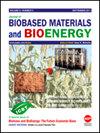Effect of Different Water-Retaining Agents and 1-Aminobenzotriazole Rooting Powder on the Survival of Ornamental Tree Transplants
IF 0.5
4区 医学
引用次数: 0
Abstract
Tree transplanting has become a crucial technical tool in both national afforestation projects and the development of garden greening. The demand for creating green ecological urban environments has significantly increased with the development of modern urbanization and improved living standards. Consequently, there is an increasing need for ornamental trees in urban construction. Ensuring higher survival rates in tree transplantation technology is of utmost importance. Given that temperature strongly influences tree growth, it is imperative to investigate how different water-retaining agents (WRAs) and 1-aminobenzotriazole (ABT) rooting powder impact the survival rate of transplanted ornamental trees. After transplantation, ornamental trees were subjected to varying dosages of WRAs and concentrations of ABT rooting powder, and their cold tolerance (CT) was evaluated using the conductivity method and growth test. The results revealed that the application of rooting powder significantly enhanced the CT of willow trees by 24.4%, 14.7%, and 30.2% in September, December, and March, compared with untreated ones. For the same months, the CT of magnolia trees increased by 57.4%, 23.7%, and 16.8%. Additionally, during those months, the CT of cypress trees treated with WRAs showed remarkable improvement, increasing by 108.9%, 108.9%, and 108.9%, respectively, with enhancements of 6.6% and 27.3% compared to untreated cypress trees. These findings highlight the crucial importance of investigating the impact of various WRAs and ABT rooting powder on the survival rate of transplanted ornamental trees, establishing a crucial benchmark for future advancements in this domain.不同保水剂和 1-氨基苯并三唑生根粉对观赏树木移植成活的影响
树木移植已成为国家造林项目和园林绿化发展的重要技术手段。随着现代城市化的发展和生活水平的提高,人们对创造绿色生态的城市环境的需求显著增加。因此,城市建设对观赏树木的需求越来越大。确保提高树木移植技术的成活率至关重要。鉴于温度对树木生长有很大影响,因此研究不同保水剂(WRA)和 1- 氨基苯并三唑(ABT)生根粉如何影响移植观赏树木的成活率势在必行。对移植后的观赏植物施用不同剂量的保水剂和不同浓度的 ABT 生根粉,并采用电导率法和生长试验评估其耐寒性(CT)。结果表明,与未处理的柳树相比,施用生根粉能显著提高柳树在 9 月、12 月和 3 月的耐寒性,分别提高了 24.4%、14.7% 和 30.2%。在同一月份,玉兰树的 CT 分别增加了 57.4%、23.7% 和 16.8%。此外,在这些月份里,使用 WRA 的柏树的 CT 也有显著改善,分别增加了 108.9%、108.9% 和 108.9%,与未使用 WRA 的柏树相比,分别增加了 6.6% 和 27.3%。这些发现突出表明,研究各种 WRA 和 ABT 生根粉对移植观赏树木成活率的影响至关重要,为该领域未来的发展建立了一个重要基准。
本文章由计算机程序翻译,如有差异,请以英文原文为准。
求助全文
约1分钟内获得全文
求助全文

 求助内容:
求助内容: 应助结果提醒方式:
应助结果提醒方式:


